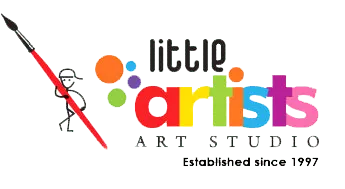
Sketching is usually a specified part of the study of art students. Generally, it includes sketching the things or objects around them like a scenic view, a fruit basket and much more. Sketching is an incredible skill which helps you to move your design idea on paper in the most enjoyable, quick, and efficient way possible. In other words, Sketching is a special tool for visualizing ideas.
Drawing is the basis of many artistic activities. Professionals, from architects to fashion designers and artists to animators, have good skills of drawing. The chances for self-expression are limitless with the use of a paper and a pen or pencil. And using various drawing methods, it is incredible to see just how many distinctive ways to sketch are possible.
Types of sketching
Here are the different types of sketching in the art, which will be helpful for you to know:
1. Interior sketching
It is very important to comprehend the laws of perspective for this kind of sketching and train your eye to determine measure and proportion. It’s always great to be able to implement your sketches in various time frames because often, you will need to draw the idea in front of the client quickly. You should have an eye for elegance, a feeling for harmonious colors, and a great palette as an interior designer. And, as in other sketching types, you must be able to sketch lots of materials such as cloth, wood, stone, and glass.
2. Fashion sketching
I this type of sketching, it is essential to have a better understanding of the face and body proportions of the humans. You must have to know about how to design figures in your sketching. The most critical aspect of fashion sketching is the ability to catch the best possible light on a design idea. Therefore, a human figure’s facial sketch is generally not significant. In these circumstances, it is essential that the concept of the designed collection can be delivered to the best advantage.

3. Industrial sketching
You’ll have to be able to draw objects in 3D, showing clearly their structural architecture and scale. To be able to make a skilled part arrangement on a page, you will need to have a strong grasp of the composition principles. You will also have to refine your technique and pace to build a perfect sketch. Metal, plastic, and glass are the most popular materials which require rendering in industrial sketching.
4. Travel sketching
The most crucial skill in this kind of sketching is to handle to express the feeling, the atmosphere of a place, capture the moment of flitting, and, at the same time, provide the proper scale and proportions of the object. You’ll also have to be able to work quickly because you’ll be sketching when you’re traveling when you’re on the road, and you don’t have many hours at your disposal on the way. In this kind of sketching, it is crucial to understand the internal characteristics of the location you experience and then graphically design it in your sketching.
Few Sketching Tips
Here are the various sketching tips which will be helpful to enhance your sketching skills:
1. Use the right pencil
When you are studying how to sketch, use mechanical pencils along with traditional ones. Mechanical pencils are generally best suited for accuracy and thin lines, although traditional pencils are perfect for broad textured areas.
2. Use varied lines
Small changes in your line width and darkness can create a visually attractive, dynamic drawing. Controlling the type of line, you draw can be difficult at first, but with practice, you can create several lines that work together to produce a cohesive picture. Experimenting with different grades of pencil (from 3H to 6B) and with keeping the pencil at various angles can be helpful to develop good sketches.
3. Avoid smudging
Use an additional piece of paper under your hand while shading. This will reduce the smudges of the pencil lines from your hands. If you use your right hand, begin shading from left to right; if you use your left hand, begin on the right and pass on to the left.
There is nothing more stressful than trying to create a neat & clean sketch which loses its charm and beauty due to smudging. Rather than use smudging to your benefit to smooth out shading. You will be able to do this with many tools. We can use a simple piece of tissue paper to get the task done.
Conclusion
Sketching is a kind of drawing which is performed entirely by freehand. Sometimes it is a method which is used to make initial representations of final sketches or designs. However, in some situations, artists can create final pieces, only by sketching. Usually, artists also use many other resources. Sketching also helps to build manipulative skills, which will help kids to write.
Want to improve your child’s sketching skills this holiday season? Have a look at our fun and creative holiday art programs.












